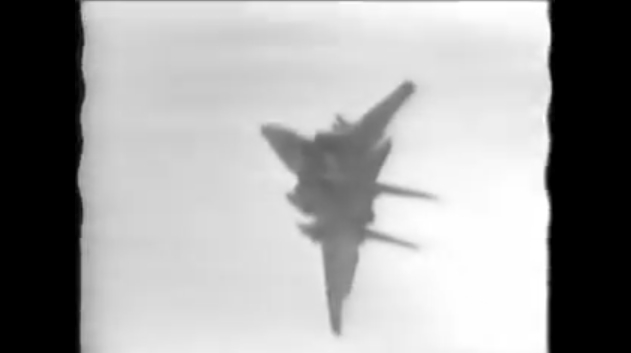Watch this rare footage featuring some interesting images taken from aboard an F-14 Tomcat by using the TCS (Television Camera Set).
Filmed by Dave “Bio” Baranek, author of the book Topgun Days: Dogfighting, Cheating Death and Hollywood Glory as One of America’s Best Fighter Jocks, and a twenty-year experienced Tomcat Radar Intercept Officer (RIO), from onboard his F-14 making use of the television camera set (TCS) mounted in the chin pod, this clip shows 2,5 minutes of video of Tomcats flying with US Navy Fighter Squadron 2 (VF-2) Bounty Hunters around 1989.
As explained by Bio himself, the story behind this video is quite interesting: “I have to say that the opening segment (head-on pass) was a boring ‘1v1’ during deployment, so the comm is kind of sloppy, because we were basically fooling around. But when we got back to the ready room and looked at the video, I thought, ‘That is a keeper!'”
The TCS was a camera that could be slaved to the radar antenna providing a gray-scale visual image to the aircrew. Even if it had a fairly limited field of view and was heavily affected by atmospheric haze, the TCS was one of the F-14’s most interesting system. Being integrated into the weapons system in fact, it was useful in many scenarios: although the television camera set was most useful at high altitude where the air is clear, it delivered to the Tomcat aircrew a unique first sight-first shot capability given the fact that the aircrew could visually identify (VID) hostile aircraft at a greater distance than using eyeballs alone.
Other interesting segments of the video show four Tomcats sweeping their wings, and a cool F-14 night catapult shot from USS Ranger using maximum afterburner.















